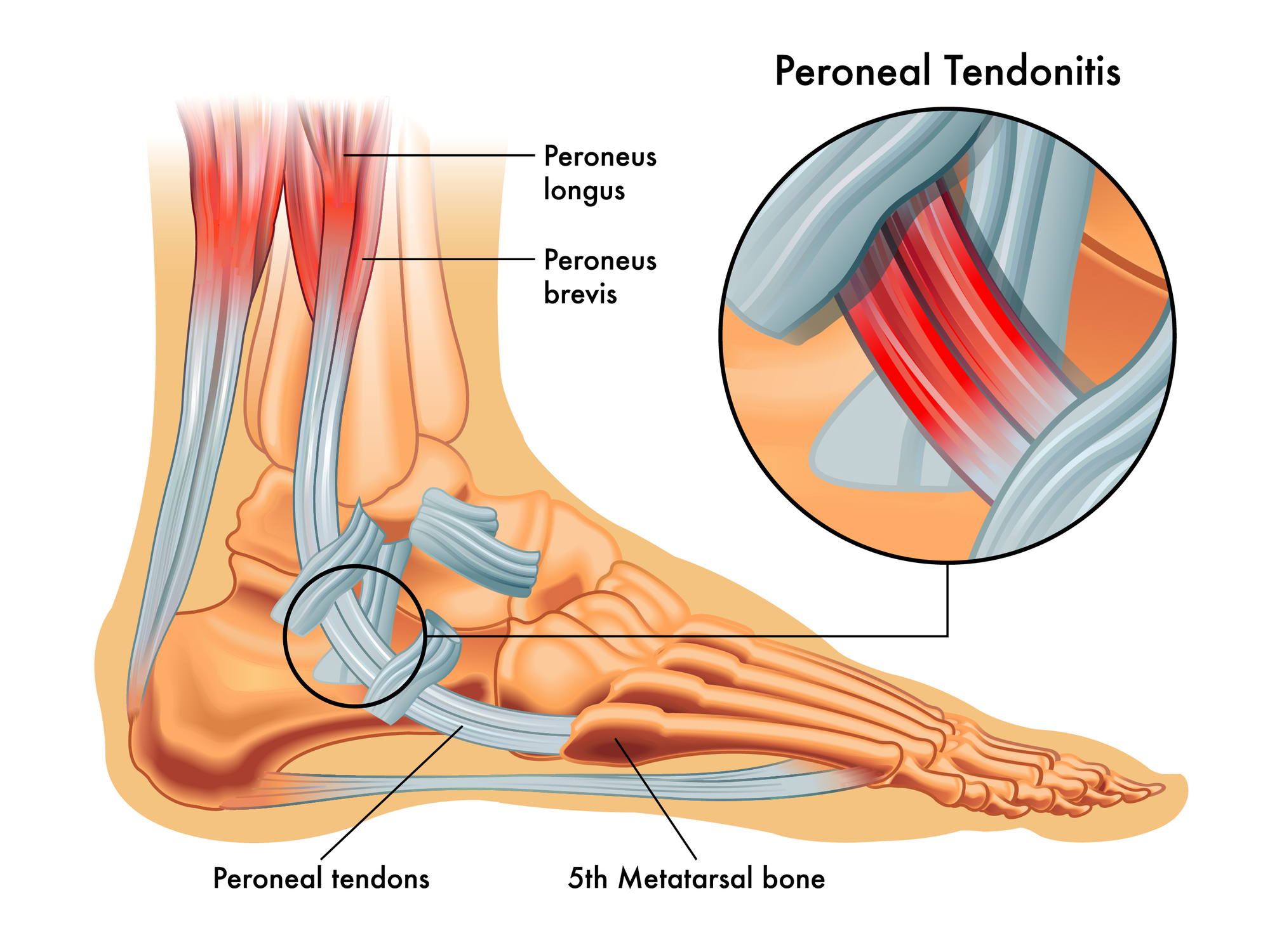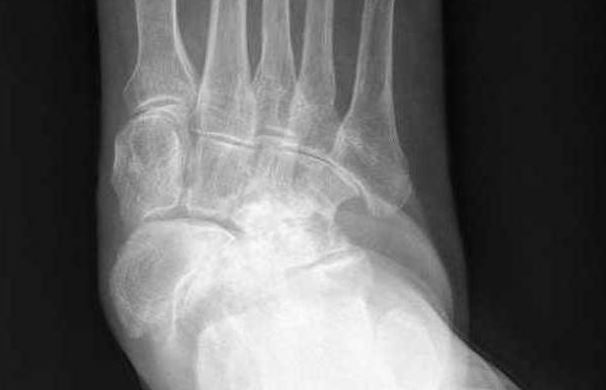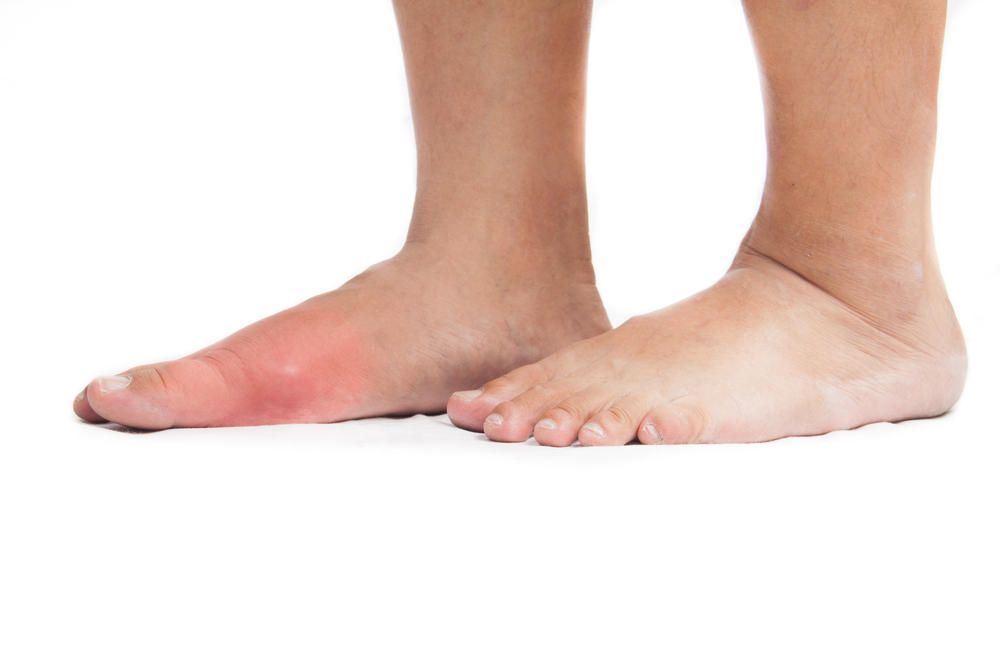‘Tired and aching feet‘ is not really a clinical diagnosis, but is probably one of the most common foot problems. Pretty much everyone will and do experience it if you spend long enough hours on the feet. Those who work long hours on hard surfaces endure tired and aching feet a lot and are always looking for ways to soothe those aching feet when they get home from work. There are specific diagnoses of foot conditions that can make the feet fired and ache that are not considered here. These include conditions like plantar fasciitis, metatarsalgia, fat pad atrophy, posterior tibial tendon dysfunction, myofascial trigger point problems, etc and need to be ruled out as the cause of the aches and tiredness and treated appropriately. Some consider the terms ‘foot strain‘ (which is a bit of an old term now and not used much) or ‘non-specific foot pain’ (which is probably a better term) as the clinical diagnosis of those tired and aching feet.
Causes of tired and aching feet (or non-specific foot pain)
Basically tired and aching feet are due to two things: (1) the volume and intensity of the loads on the foot and (2) the biomechanics. The final cause is most likely an interaction of these two things.
The volume and intensity of the loads:
This is how much time you spend on your feet. This could be the nature of your employment and you may have no choice or it could be standing a lot for a one off reason and you are just not used to standing around for that amount of time. You may have to lift or carry heavier loads as part of your employment and that can increase the risk. A lot may depend on the nature of the surface you are standing on. Concrete is going to be worse than carpeted softer areas.
Your body weight may also have a lot to do with the loads. Those who are over weight are going to put a lot of extra load on the foot and its supporting structures increasing the risk for tired and aching feet (and many other foot problems).
Our feet and the supporting structures are remarkable structures and they can adapt to higher volumes and intensity of load if given time and any increases in the volume and intensity takes place slowly and gradually. This allows the foot time to adapt to those loads. Starting a new job with a sudden change in those conditions can be a big risk factor here.
The biomechanics:
This is the structure, posture or alignment and function of the foot which will determine how vulnerable the foot is to the loads that are placed on. There is a whole range of different biomechanical dysfunctions that can cause issues here with weightbearing. This can range from a ‘overpronated‘ foot (“flat foot”) which could be due to a number of things like tight calf muscles or a forefoot varus, for example to a higher arch cavus type foot.
The type and nature of the footwear worn can also affect the biomechanics and increase the risk for tired and aching feet. For example, the nature of the employment may require that female workers wear a higher heel dress shoe or in some industries workers need to wear rigid steel toe cap footwear to protect the feet. These will create pressures on different parts of the foot which can be overloaded.
Treatment of tired and aching feet
This should be directed at dealing with the above two issues that causes the tired and aching feet and some pain management approaches if a bit on the more painful side.
Pain management approaches:
This will depend on how bad the actual pain is. If its not good, then consider using ice packs if its more acute and hot packs if it more chronic. Non-steroidal anti-inflammatory drugs for the short term may be needed to get some more relief. A foot massage can also help reduce the symptoms. The use of creams such as fisocrem or Deep Heat can also give some relief.
This is probably only a short term measure and is not going to be much help in the medium to long term unless the issues of intensity and volume of the loads and the biomechanics are addressed.
The volume and intensity of the loads:
Can you reduce the amount of time you spend on your feet during the day, even if its only for the short term? Can you carry out more of your work in a seated position rather than standing? You also need to make sure than any increase in the time you spend on your feet, perhaps as a result of changes in your employment are done slowly and gradually – if that is at all possible. This gives the feet a chance to adapt to the increasing loads.
Can the surface that you spend most of your time standing on be changed to a softer surface? Conrete vs carpeted areas? There are commercially made anti-fatigue mats available that can go a long way to help here.
If being overweight is an issue increasing the load on the feet, then over the long term loosing weight will contribute significantly to getting rid of the symptoms associated with those tired and aching feet and decrease the risk for other foot problems, not to mention an improvement in overall health and well-being..
The biomechanics:
Sorting out the foot biomechanics is probably the most effective way to deal with tired and aching feet, but that does not mean you should ignore the other approaches. The cause is multi-factorial and so is the proper management:
- Get good shoes. Get shoes that have cushioning and shoes that have support. Running shoes are good for being on your feet all day and have good cushioning and support. The cushioning in the she can be supplemented with the use of cushioning insoles.
- Get some good arch support for the shoes. Start with the simple arch supports that you can buy over-the-counter and go from there. You may need to see a podiatrist for proper custom made foot orthotics, depending on the complexity of your problem and the specific cause of the biomechanical problem that you have. Ignore all the nonsense you can read online about these; for example, the claims that they weaken the muscles (they don’t). If you need them, then you need them. If you don’t need them, then you don’t need them. These are effective treatments for tired and aching feet over the short and medium term. There is nothing wrong with using them long term, but if you do not want to use them long term, then you do not need to. After the problem settles, adequate shoes may be all you need or you can increase the use of foot exercises and decrease the use of the foot supports. If your problem is more substantial, then you may need to wear them in the longer term. Each person is going to be different here and one size is not going to fit all.
- There are foot strengthening and stretching that you can do to help. Calf muscle stretching is important, but only if the calf muscles are tight. The short foot exercise can be used to strengthen the arch muscles and the core of the foot. However, the exercises are not going to help in the shorter term (foot orthotics will) as they take time for changes to happen and they will not help of the biomechanical problem is osseous or bony. The exercises will help if the biomechanical issues are related to muscle strength or soft tissue changes, but need time before they are effective and you need to keep doing them. There is nothing wrong with wearing foot supports in the short to medium term and relying on the strengthening exercises over the medium to longer term. Avoid any advice from anyone who advocates the one approach to treat all.
Foot Soaks for tired and aching feet
Soaking the feet in {enter solution} is easily the most commonly recommended approach of managing tired and aching feet after work if you were to use Google to find an answer. Did you try any of them? How did that work out for you? They generally do not work as the have nothing to do with addressing the volume and intensity of the loads and the biomechanics. At best and at a bit of a stretch they may help with a small amount of the pain management approach and you feel good as you relax when doing it.
Personal opinion on tired and aching feet
This is a “condition” that is not seen that often in clinical practice despite it probably being one of the most common foot problems. Most people either just put up with it (and make them feel miserable and whinge about it) or do things themselves to self-manage it (which is fine and generally works quite well). Health professional help should probably be sought out if it is making you miserable, the self-management is not working too well or you have a more specific cause of the tiredness and aching such as plantar fasciitis, metatarsalgia, posterior tibial tendon dysfunction, myofascial trigger point problems, osteoarthritis etc.
Foot massages are great to get some relief from the tired and aching feet, but like the soaks mentioned above, unless you address the intensity and volumes of loads and the vulnerability (ie biomechanics) of the foot, its going to be an ongoing problem.
Earlier I said most people experience this from time to time and I am no exception. My most recent worst experience was standing for 6 hours at a music concert… I was not prepared for that and should have known better. I was just not used to that volume and intensity and should have better prepared for it as I never stand for prolonged periods of time from day-to-day, despite being fit enough to go for 5-10k runs a few times a week.
Author:
University lecturer, runner, cynic, researcher, skeptic, forum admin, woo basher, clinician, rabble-rouser, blogger, dad.



